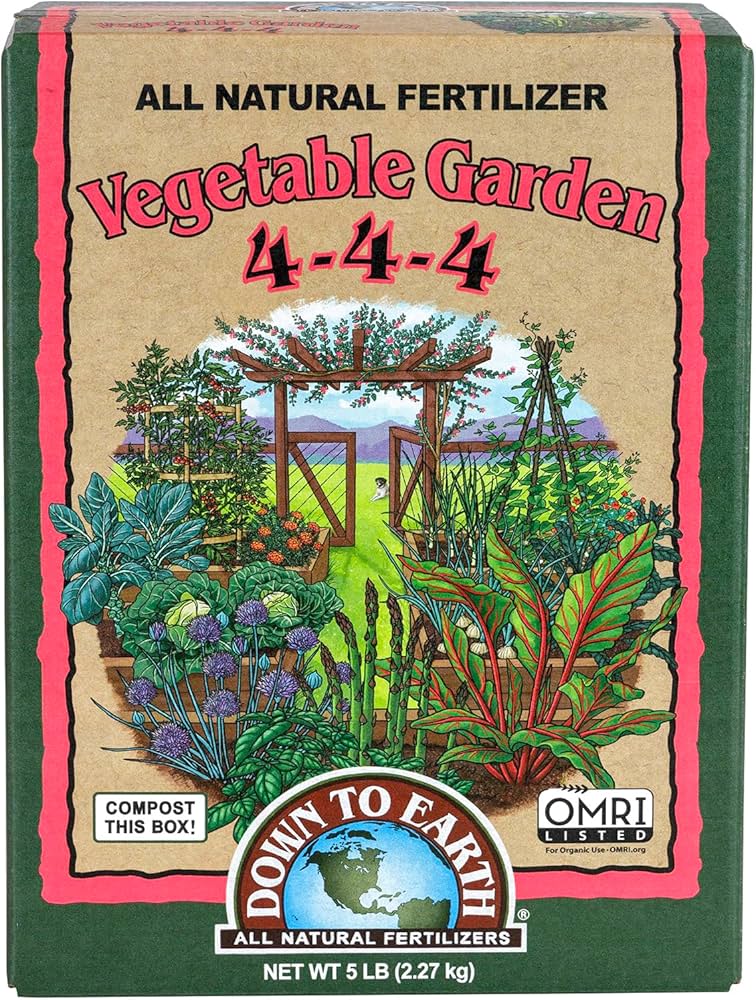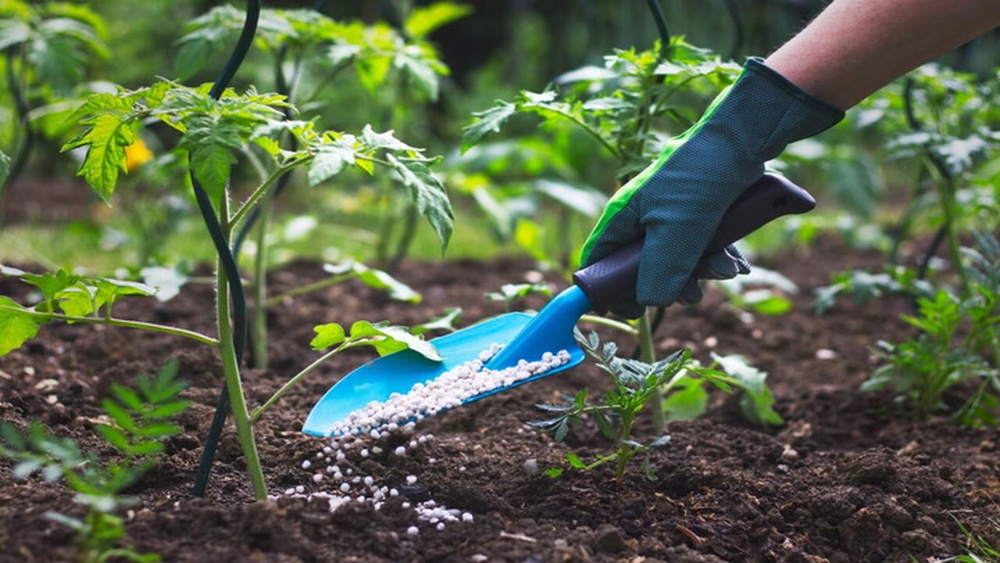As an Amazon Associate, I earn from qualifying purchases.
Are you wondering when the best time is to apply fertilizer to your vegetable garden? Getting the timing right can make a huge difference in how healthy and productive your plants become.
Fertilizing too early or too late might waste your effort or even harm your crops. But don’t worry—you’re about to discover the simple, effective moments to feed your garden so your veggies grow strong, lush, and full of flavor. Keep reading, and you’ll learn exactly when and how to nourish your vegetable garden for the best results all season long.

Fertilizer Types For Vegetables
Choosing the right fertilizer type for your vegetable garden affects plant health and yield. Different fertilizers provide nutrients in unique ways. Understanding these options helps you feed your vegetables properly. This section explains common fertilizer types for vegetables.
Organic Vs. Synthetic Fertilizers
Organic fertilizers come from natural sources like compost or manure. They release nutrients slowly and improve soil quality over time. Organic options support beneficial soil microbes and reduce chemical buildup.
Synthetic fertilizers are made from chemical compounds. They deliver nutrients quickly for faster plant growth. These fertilizers are easy to apply and precise but may harm soil life if overused.
Choosing between organic and synthetic depends on your gardening style and soil needs. Both types can work well when used correctly.
Slow-release And Liquid Options
Slow-release fertilizers provide nutrients gradually over weeks or months. They reduce the risk of nutrient burn and need fewer applications. Slow-release types work well for steady vegetable growth.
Liquid fertilizers dissolve in water and feed plants immediately. Use them for quick nutrient boosts during key growth stages. They are easy to apply through foliar sprays or soil watering.
Combining slow-release and liquid fertilizers can balance long-term feeding with fast results. This approach supports healthy vegetables throughout the growing season.
/GettyImages-138093395-d9cac97b1f1949f2a8bc42fdef42f099.jpg)
Timing Before Planting
Applying fertilizer before planting vegetables sets the stage for strong growth. Proper timing helps plants access nutrients right from the start. Fertilizing too early or too late can reduce effectiveness. Preparing the soil and adding fertilizer at the right time improves plant health and yield.
Soil Preparation And Testing
Test the soil to understand its nutrient levels. A soil test shows what nutrients the soil lacks. It guides how much fertilizer to add. Prepare the soil by removing weeds and debris. Loosen the soil to improve air and water flow. Proper soil preparation helps fertilizer reach plant roots.
Incorporating Fertilizer Into Soil
Mix fertilizer evenly into the top 6 to 8 inches of soil. This depth lets roots absorb nutrients easily. Avoid placing fertilizer too deep or too close to seeds. Use a rake or hoe to blend fertilizer well. Incorporating fertilizer before planting ensures nutrients are ready when seeds sprout.
Fertilizing During Growth
Fertilizing during the growth phase is vital for a healthy vegetable garden. Plants need steady nutrients to build strong roots, leaves, and fruits. Feeding at the right times supports their development and boosts yields. This section explains key stages for applying fertilizer to your vegetables.
Early Growth Stage Feeding
Young plants need nutrients to start well. Apply a balanced fertilizer after seedlings emerge. This helps roots grow deep and leaves become strong. Use a light dose to avoid burning tender roots. Feeding during early growth sets the foundation for a strong garden.
Mid-season Boosts
As plants grow taller, their nutrient needs rise. Apply fertilizer every three to four weeks to maintain steady growth. Choose a fertilizer with more nitrogen to support leafy growth. Mid-season feeding keeps plants healthy and vigorous. It prevents nutrient shortages that slow growth.
Flowering And Fruiting Stage Fertilizing
When flowers appear, switch to fertilizer higher in phosphorus and potassium. These nutrients help flowers develop and fruits ripen. Apply fertilizer carefully around the base to avoid leaf burn. Proper feeding at this stage increases the size and quality of vegetables.
Frequency And Amount
Knowing how often and how much fertilizer to apply is key for a healthy vegetable garden. Too much fertilizer can harm plants and the soil. Too little slows growth and reduces harvest. The right balance depends on the vegetable type and soil condition.
Applying fertilizer regularly supports steady plant growth. It also replenishes nutrients used up by plants. The frequency and amount need careful planning to avoid nutrient build-up or deficiency.
Recommended Application Intervals
Most vegetable gardens benefit from fertilizing every three to four weeks. This schedule keeps nutrients available as plants grow. Before planting, apply a balanced fertilizer to prepare the soil. After plants sprout, side-dress with fertilizer to boost growth. Leafy greens often need feeding every two to three weeks. Root vegetables require less frequent feeding, about every four weeks.
Adjusting Based On Plant Needs
Watch plant health to adjust fertilizer frequency. Yellow leaves can signal nitrogen deficiency, needing more frequent feeding. Blooming or fruiting plants need extra nutrients during these stages. Heavy feeders like tomatoes and peppers often need more fertilizer than light feeders like carrots. Soil tests help determine nutrient levels and guide fertilizer amount. Over-fertilizing can cause leaf burn and weak roots. Adjust amount by following package instructions and plant response.
Special Considerations
Applying fertilizer to a vegetable garden requires special care. Different plants and conditions change how and when to fertilize. Paying attention to these details helps plants grow strong and healthy.
Here are some key points to consider for better fertilizing results in your vegetable garden.
Vegetables That Need Less Fertilizer
Some vegetables need little fertilizer. Leafy greens like spinach and lettuce grow well with less feeding. Beans and peas fix their own nitrogen, so they need less nitrogen fertilizer. Over-fertilizing these plants can cause too much leaf growth and fewer vegetables.
Avoiding Over-fertilization
Too much fertilizer harms plants and soil. It can burn roots and stop plant growth. Watch for yellow or brown leaf edges. Use fertilizer according to package instructions. Applying small amounts often is better than one large dose. Test soil to know the exact nutrients needed.
Weather And Soil Moisture Effects
Fertilizer works best when soil is moist. Dry soil makes nutrients hard to absorb. Avoid fertilizing before heavy rain to stop runoff. Fertilize early in the morning or late afternoon in hot weather. This helps prevent fertilizer loss and protects plants.

Application Techniques
Applying fertilizer correctly improves vegetable growth and yield. Choosing the right technique helps nutrients reach the roots effectively. Proper application also reduces waste and environmental impact. Below are some common methods for fertilizing vegetable gardens.
Side-dressing And Top-dressing
Side-dressing means placing fertilizer beside growing plants. This method delivers nutrients directly to the root zone. Use a small amount of fertilizer near each plant’s base. Avoid piling fertilizer against stems to prevent damage.
Top-dressing involves spreading fertilizer on the soil surface around plants. It slowly releases nutrients as water carries them to roots. This technique works well for established plants needing extra feeding. Water the garden after top-dressing to help nutrients soak in.
Foliar Feeding Tips
Foliar feeding sprays liquid fertilizer directly on leaves. Plants absorb nutrients quickly through leaf surfaces. Use this method for fast nutrient boosts during growth spurts. Apply foliar feed early in the morning or late afternoon for best results.
Use a fine spray to avoid leaf damage. Do not apply foliar fertilizer in strong sunlight. Always follow label instructions for dilution and frequency.
Best Time Of Day To Fertilize
Fertilize vegetable gardens early in the morning or late afternoon. Cooler temperatures reduce nutrient loss and plant stress. Avoid fertilizing during midday heat to prevent leaf burn. Moist soil helps fertilizer absorb better into roots.
Watering before fertilizing can improve nutrient uptake. Consistent timing supports steady plant growth and health.
Fall And Off-season Fertilizing
Fertilizing your vegetable garden during the fall and off-season helps maintain soil health. It prepares the ground for a strong start next spring. This practice nourishes the soil while plants rest. Applying fertilizer now supports future growth and crop yield.
Benefits Of Fall Application
Fall fertilizing replenishes nutrients lost during the growing season. It boosts soil fertility for the next planting cycle. Nutrients added in fall break down slowly over winter. This slow release feeds plants when they begin growing again. It also improves soil structure and microbial activity. Healthy soil holds water better and resists erosion.
Preparing Soil For Next Season
Adding fertilizer in the off-season conditions the soil well before planting. It helps break down organic matter, enriching the soil. Fertilizer encourages beneficial microbes to thrive. These microbes make nutrients more available to plants. Fall application reduces the need for heavy fertilizing in spring. It creates a fertile bed that supports strong seedlings. Proper preparation leads to better vegetable growth and higher yields.
Frequently Asked Questions
How To Apply 10-10-10 Fertilizer To Vegetable Garden?
Apply 10-10-10 fertilizer by spreading evenly around plants before planting. Lightly mix into soil and water well. Reapply every 3-4 weeks during growth. Avoid direct contact with stems to prevent burning.
Can I Fertilize My Vegetable Garden In The Fall?
Yes, you can fertilize your vegetable garden in fall to enrich soil for spring growth. Use slow-release or organic fertilizers. Avoid over-fertilizing to prevent nutrient runoff. Focus on adding compost or manure to improve soil health during the dormant season.
Which Vegetables Don’t Like Fertilizer?
Leafy greens like spinach and lettuce, root crops like carrots and radishes, and herbs such as basil dislike heavy fertilizer. Excess fertilizer causes poor flavor and weak growth in these vegetables. Use minimal or balanced feeding to maintain their quality and health.
Is October Too Late To Fertilize Plants?
October can be too late to fertilize many plants as growth slows in cooler weather. Focus on fall-loving or winter crops. Avoid fertilizing plants that are entering dormancy to prevent weak growth or damage. Always consider your local climate and plant type before fertilizing in October.
Conclusion
Applying fertilizer at the right time helps your vegetables grow strong. Start before planting to build healthy roots. Feed plants again during growth spurts or flowering. Avoid over-fertilizing, which can harm plants and soil. Watch your garden closely to adjust feeding as needed.
Healthy soil and proper fertilizer create better yields. Timing matters for vibrant, productive vegetable gardens. Keep these tips in mind for a thriving garden season.

